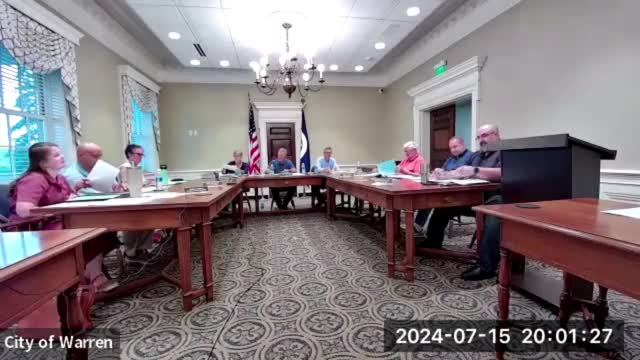OSHA proposes sweeping changes to emergency response standards
July 19, 2024 | Warren City, Warren County, Pennsylvania

This article was created by AI summarizing key points discussed. AI makes mistakes, so for full details and context, please refer to the video of the full meeting. Please report any errors so we can fix them. Report an error »

During a recent government meeting, officials discussed the proposed changes to the Occupational Safety and Health Administration (OSHA) emergency response standard, which has not been updated in over 40 years. The new regulations aim to broaden the scope of emergency responders to include not only firefighters but also emergency medical service providers and technical rescue teams.
The proposed emergency response standard would introduce significant changes, including enhanced training requirements, mandatory biannual physicals, and stricter exposure limits to hazardous materials. These changes could impose substantial costs on local fire departments, with initial implementation expenses estimated at up to $14,000 in the first year alone. The discussions highlighted concerns about how these increased requirements might affect talent acquisition and retention within the firefighting community, as the new standards would necessitate more extensive training and skill levels.
Currently, Pennsylvania does not have a state OSHA plan, meaning that volunteer firefighters are not covered under OSHA regulations unless they receive significant remuneration. This could change if pending state legislation is passed, which would allow for a state plan that treats volunteers as employees under OSHA guidelines. The proposed legislation is currently in the Senate committee stage after passing the House.
While the new standards are designed to enhance worker safety, there are concerns about the potential burden they may place on smaller rural fire departments compared to larger city departments. Officials emphasized the importance of providing a unified response to OSHA regarding the proposed changes, as many municipalities are considering similar letters to express their collective concerns.
The public comment period for the proposed standard has been extended, allowing stakeholders to voice their opinions before any final decisions are made. The meeting underscored the need for a careful balance between improving safety standards and ensuring that local emergency services can continue to operate effectively.
The proposed emergency response standard would introduce significant changes, including enhanced training requirements, mandatory biannual physicals, and stricter exposure limits to hazardous materials. These changes could impose substantial costs on local fire departments, with initial implementation expenses estimated at up to $14,000 in the first year alone. The discussions highlighted concerns about how these increased requirements might affect talent acquisition and retention within the firefighting community, as the new standards would necessitate more extensive training and skill levels.
Currently, Pennsylvania does not have a state OSHA plan, meaning that volunteer firefighters are not covered under OSHA regulations unless they receive significant remuneration. This could change if pending state legislation is passed, which would allow for a state plan that treats volunteers as employees under OSHA guidelines. The proposed legislation is currently in the Senate committee stage after passing the House.
While the new standards are designed to enhance worker safety, there are concerns about the potential burden they may place on smaller rural fire departments compared to larger city departments. Officials emphasized the importance of providing a unified response to OSHA regarding the proposed changes, as many municipalities are considering similar letters to express their collective concerns.
The public comment period for the proposed standard has been extended, allowing stakeholders to voice their opinions before any final decisions are made. The meeting underscored the need for a careful balance between improving safety standards and ensuring that local emergency services can continue to operate effectively.
View full meeting
This article is based on a recent meeting—watch the full video and explore the complete transcript for deeper insights into the discussion.
View full meeting